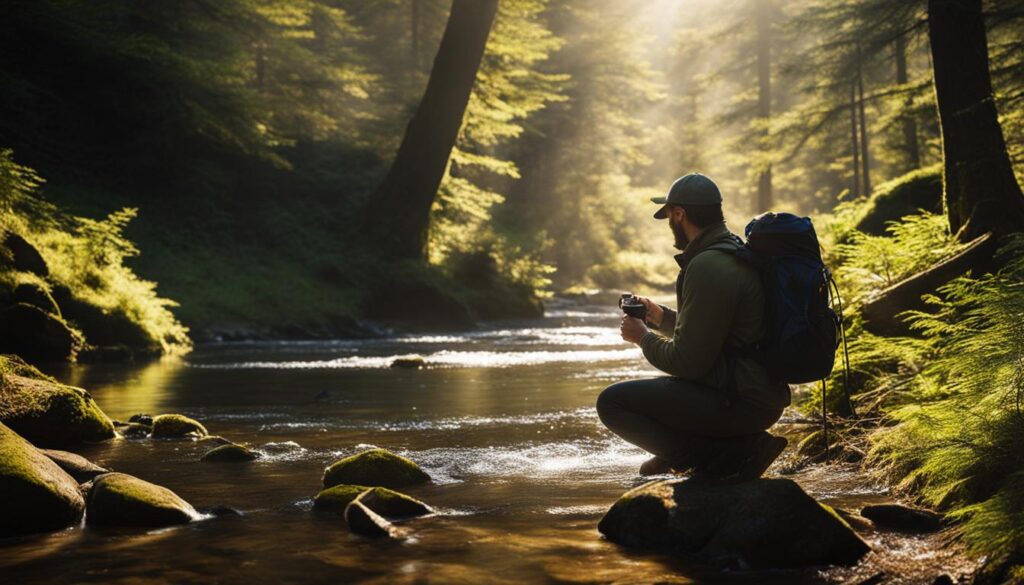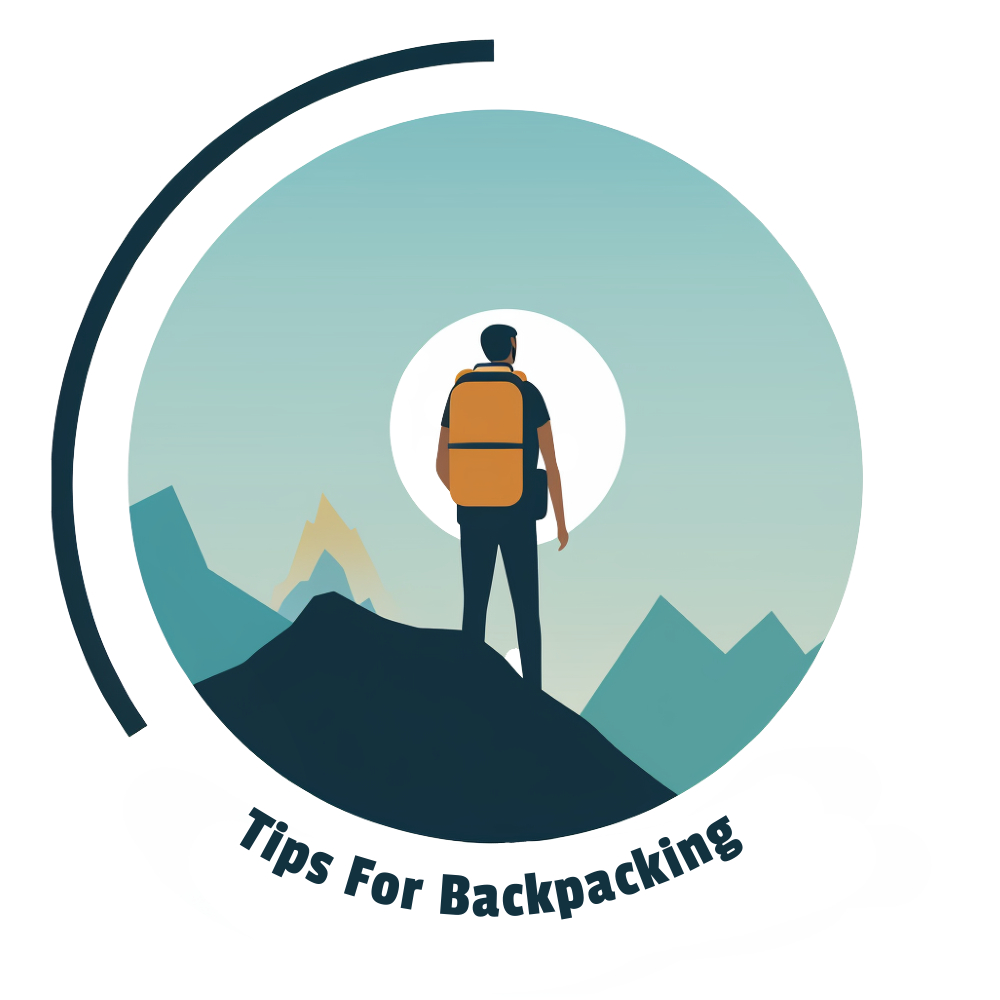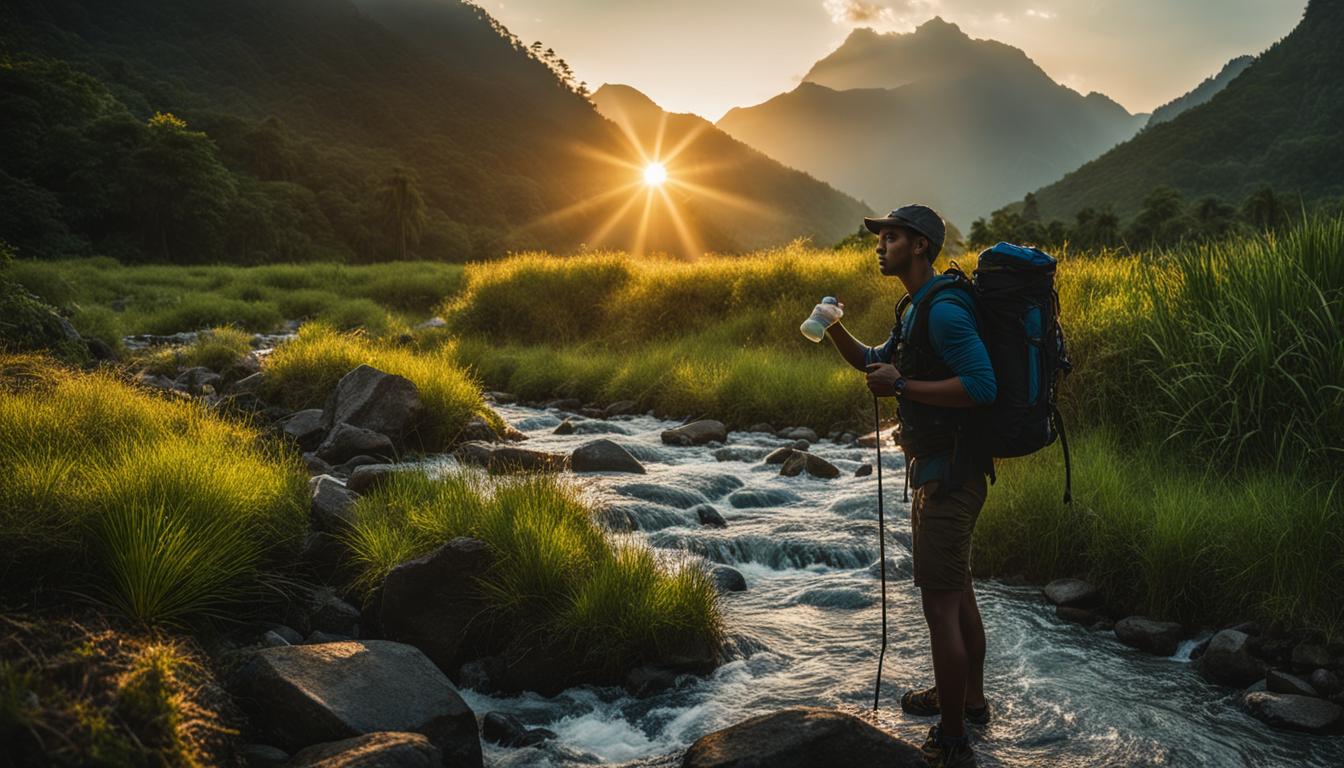Staying hydrated is crucial when backpacking in the wilderness. Water is not always readily available, and dehydration can have serious consequences. It’s important to understand the risks of dehydration and the importance of finding safe water sources. Dehydration can lead to reduced cognitive performance, heightened pulse, nausea, and other symptoms. In extreme cases, fluid deficits past 15% can even be fatal. Backpackers need to carry enough water with them and have a way to treat water they find in case of emergency. Contaminated water is a major cause for concern, as it can lead to waterborne illnesses caused by bacteria, parasites, and viruses. These illnesses can be life-threatening in the backcountry, where dehydration can be exacerbated by diarrhea and vomiting. Treating water from wilderness sources is always recommended to ensure your safety.
Key Takeaways:
- Staying hydrated is crucial for backpackers in the wilderness to prevent dehydration and its associated risks.
- Carry enough water with you and have a water treatment method to ensure access to safe drinking water.
- Contaminated water in the wilderness can lead to waterborne illnesses, which can be life-threatening.
- Consider the risks of dehydration and the importance of staying properly hydrated during your backpacking adventures.
- Treating water from wilderness sources is recommended to ensure your safety and prevent waterborne illnesses.
Finding Water Sources in the Backcountry: Tips for Backpackers

When backpacking in the wilderness, finding clean and safe water sources is essential for staying hydrated and avoiding waterborne illnesses. Here are some tips to help backpackers locate reliable water sources:
- Research and Plan: Before your trip, use multiple resources such as topographic maps, aerial photos, guidebooks, online hiking forums, and information from park rangers to identify potential water sources along your route. Topographic maps can indicate rivers, creeks, lakes, ponds, and springs, but also consider other possible sources such as snowfields, trickles in draws or gullies, pools in hollows or bare-rock potholes, and seeping slopes.
- Consider Seasonality: Take into account the seasonality of water sources. Some sources may be seasonal or ephemeral, particularly in arid or high-altitude regions. Plan your route with regular water replenishment in mind, ensuring that there are reliable water sources at suitable intervals.
- Be Observant: While hiking, actively look for signs of water, such as vegetation, animal tracks, or patches of damp ground. Listen for the sound of flowing water and keep an eye out for natural depressions that may collect rainwater.
- Test and Treat: Even if a water source appears clean, it is essential to treat the water before consuming it. Use water treatment methods such as boiling, chemical treatment, or filtration to eliminate harmful pathogens. Carry water treatment tools and supplies with you to ensure your safety throughout the trip.
“Water is life, especially when backpacking in the wilderness. Always prioritize finding reliable water sources and treating the water you consume to avoid dehydration and waterborne illnesses.”
By following these tips and staying vigilant, backpackers can ensure they have a constant supply of clean and safe water during their outdoor adventures. Remember, it’s better to be cautious and take the necessary steps to treat water than to risk dehydration or illness. Stay hydrated and enjoy your backpacking journey!
Water Treatment Methods for Backpackers: Ensuring Safe Drinking Water on Your Adventures
When venturing into the wilderness, it’s crucial for backpackers to have access to safe drinking water. In order to stay hydrated and prevent waterborne illnesses, it’s important to understand and utilize effective water treatment methods. Backpackers have several options to ensure their water is safe to drink, including boiling, chemical treatment, and filtration.
Boiling Water
Boiling water is a highly effective method for water purification. By bringing water to a rolling boil for at least one minute (or three minutes at higher altitudes), all pathogens, including viruses, bacteria, and protozoa, are killed. While boiling is the most reliable method, it does require time, fuel, and the additional step of cooling the water to a safe drinking temperature.
Chemical Treatment
Chemical treatment involves using disinfectants such as iodine or chlorine to kill or destroy pathogens in the water. This method is lightweight and easy to carry, making it a popular choice among backpackers. However, it’s important to follow the instructions on the chemical treatment product carefully, as the effectiveness can be impacted by factors such as water temperature and clarity.
Filtration
Filtration systems are another option for backpackers to ensure safe drinking water. Portable water filters with a pore size of 0.4 microns or smaller can effectively remove bacteria and protozoa from the water. However, viruses are generally too small to be filtered out by most portable filters. It’s important to choose a filter that meets your specific needs and consider using additional methods such as chemical treatment or boiling to further ensure water safety.
| Water Treatment Method | Pros | Cons |
|---|---|---|
| Boiling | Effective against all pathogens | Requires time, fuel, and cooling |
| Chemical Treatment | Lightweight and easy to carry | Effectiveness can be impacted by factors like water temperature and clarity |
| Filtration | Removes bacteria and protozoa | May not filter out viruses |
It’s important for backpackers to consider their specific needs and the conditions they will encounter on their adventures when choosing a water treatment method. It’s also a good idea to have backup options available in case the primary method fails or is not suitable for the situation. Prioritizing water safety and implementing appropriate treatment methods will help ensure a successful and healthy backpacking trip.
How Can I Ensure Safe Water Sources for Backpacking and Wilderness Adventures?
When embarking on backpacking and wilderness adventures, ensuring safe water sources is crucial. Utilizing effective water filtration techniques wilderness is essential to remove harmful contaminants and bacteria. Investing in portable water filters or purifying tablets can help guarantee access to clean and safe drinking water throughout your journey.
In Conclusion: Prioritizing Water Safety on Your Backpacking Trips
As a backpacker, ensuring access to clean drinking water is essential for a successful and safe adventure. Safe drinking water for hikers should be a top priority throughout your journey. Remember to carry an ample supply of water with you, considering the duration and intensity of your trip.
Having a reliable water treatment method is equally important. Consider the best water sources for camping and choose a suitable method to treat the water you find in the wilderness. Whether you opt for boiling, chemical treatment, or filtration, make sure it aligns with your needs and preferences.
Staying hydrated is crucial, as safe drinking water on adventurous trips helps prevent dehydration and the associated risks. Dehydration can lead to fatigue, decreased performance, and other health issues that can spoil your experience. Prioritize water safety by researching and planning your route, including regular water replenishment points. By taking these precautions, you can enjoy your backpacking adventure while staying properly hydrated and minimizing the risk of waterborne illnesses.
In conclusion, clean drinking water is a vital component of any backpacking trip. Remember to prioritize water safety, carry enough water, and practice proper water treatment methods. By doing so, you can embark on your wilderness adventure with confidence, knowing you have taken the necessary steps to ensure your well-being.

